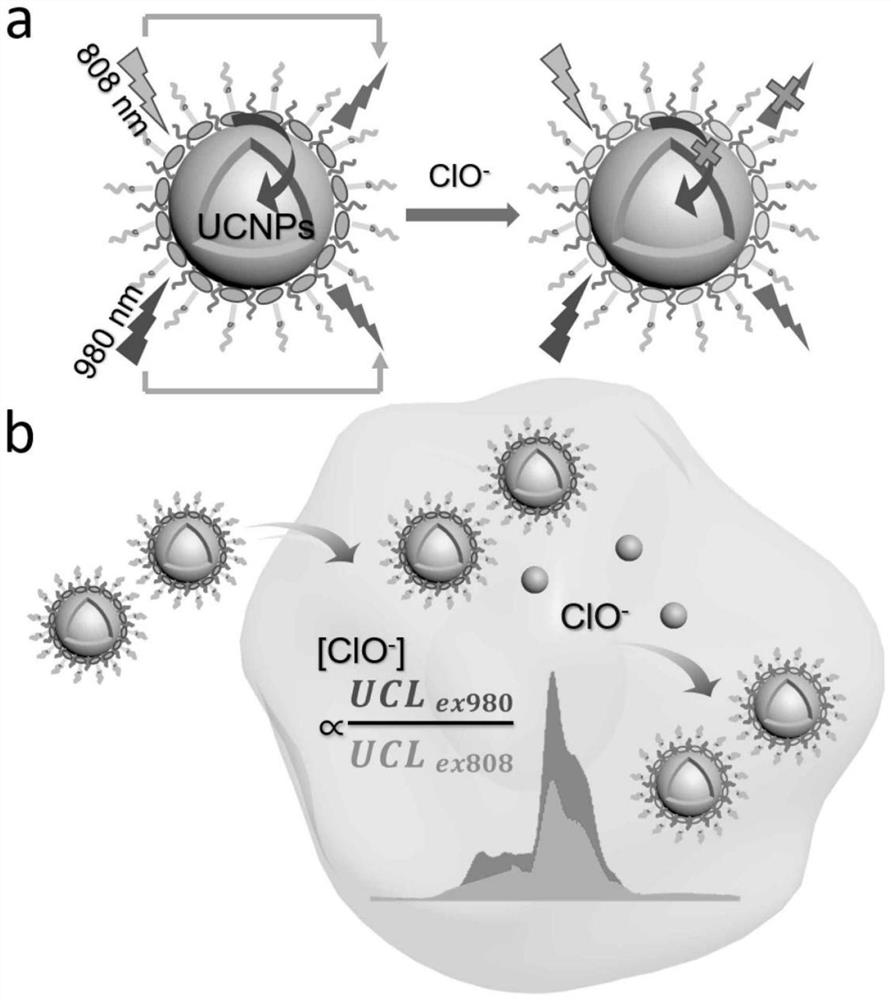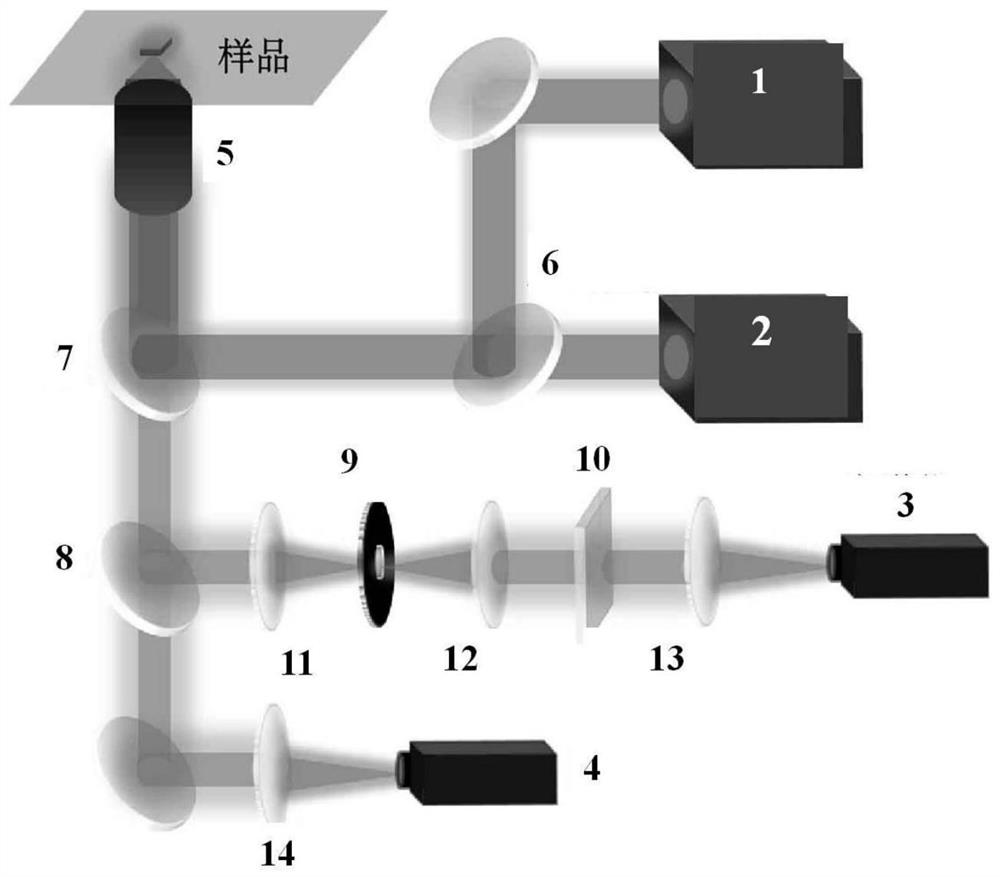An Intracellular Detection Method Based on Dual Excitation Ratiometric Upconversion Fluorescent Probes
A detection method and nano-probe technology, applied in fluorescence/phosphorescence, material excitation analysis, measurement devices, etc., can solve problems such as inability to achieve accurate intracellular quantitative detection, and achieve the effect of improving sensitivity
- Summary
- Abstract
- Description
- Claims
- Application Information
AI Technical Summary
Problems solved by technology
Method used
Image
Examples
Embodiment 1
[0078] This example uses dye-sensitized Yb-doped up-conversion nanoparticles IR808-UCNP@Yb-F127 to detect hypochlorous acid:
[0079] (1) 1mmol oil-soluble nanoparticles NaYF 4 :Yb,Er@NaYF 4 : The dye IR808 of Yb and 1 μ mol is dispersed in 20mL solvent methylene chloride, mixes one hour, obtains solution one;
[0080] (2) Dissolve 400mg of F127 in 2mL of dichloromethane, ultrasonically mix for 2min, and add dropwise to solution 1 under constant stirring to obtain solution 2;
[0081] (3) The solution is rotated and evaporated to remove the solvent dichloromethane, and after the volatilization of the dichloromethane is completed, it is redispersed in the aqueous solution;
[0082] (4) After the step (3) is completed, centrifuge and wash twice with deionized water to obtain the water-soluble dye-sensitized up-conversion nanoprobe.
[0083] (5) reacting the nanoprobe in step (4) with the target detection substance (hypochlorous acid) of 0-100 μ M for 30 minutes;
[0084] (6)...
Embodiment 2
[0089] This example uses dye-sensitized Nd-doped up-conversion nanoparticles IR808-UCNP@Nd-F127 to detect hypochlorous acid:
[0090] (1) 1mmol oil-soluble nanoparticles NaYF 4 :Yb,Er@NaYF 4 : Nd and 1 μmol of the dye IR808 were dispersed in 20mL of dichloromethane, mixed for one hour to obtain solution 1;
[0091] (2) Dissolve 400mg of F127 in 2mL of dichloromethane, ultrasonically mix for 2min, and add dropwise to solution 1 under constant stirring to obtain solution 2;
[0092] (3) The solution is rotated and evaporated to remove the solvent dichloromethane, and after the volatilization of the dichloromethane is completed, it is redispersed in the aqueous solution;
[0093] (4) After step (3) is completed, centrifuge and wash twice with deionized water to obtain a water-soluble dye-sensitized up-conversion nanoprobe;
[0094] (5) reacting the nanoprobe in step (4) with the target detection substance (hypochlorous acid) of 0-100 μ M for 30 minutes;
[0095] (6) Measure t...
Embodiment 3
[0100] refer to image 3 , near-infrared dual-excitation confocal microscopy system, including 2 independent lasers (980nm laser 1 and 808nm laser 2 2), laser scanning confocal microscope and fluorescence signal acquisition device. Among them, the laser scanning confocal microscope includes basic components such as an oil mirror 5, a dichroic mirror 1 6, a dichroic mirror 2 7, and a mirror 8; the fluorescence signal acquisition device includes a spectrometer 3 and a CCD camera 4 (as an image controller) .
[0101] The excitation light emitted by the excitation light source is focused by the oil lens to the cell to be observed, and the up-conversion light emitted by the nano-probe in the cell to be tested passes through the oil lens 5, dichroic mirror 1 6, and dichroic mirror 2 7 in sequence. , mirror 8, lens one 11, pinhole 9, lens two 12, optical filter 10 and lens three 13, captured by spectrometer 3. The up-converted light emitted by the nano-probe in the cell to be teste...
PUM
| Property | Measurement | Unit |
|---|---|---|
| particle size | aaaaa | aaaaa |
| wavelength | aaaaa | aaaaa |
Abstract
Description
Claims
Application Information
 Login to View More
Login to View More - R&D
- Intellectual Property
- Life Sciences
- Materials
- Tech Scout
- Unparalleled Data Quality
- Higher Quality Content
- 60% Fewer Hallucinations
Browse by: Latest US Patents, China's latest patents, Technical Efficacy Thesaurus, Application Domain, Technology Topic, Popular Technical Reports.
© 2025 PatSnap. All rights reserved.Legal|Privacy policy|Modern Slavery Act Transparency Statement|Sitemap|About US| Contact US: help@patsnap.com



